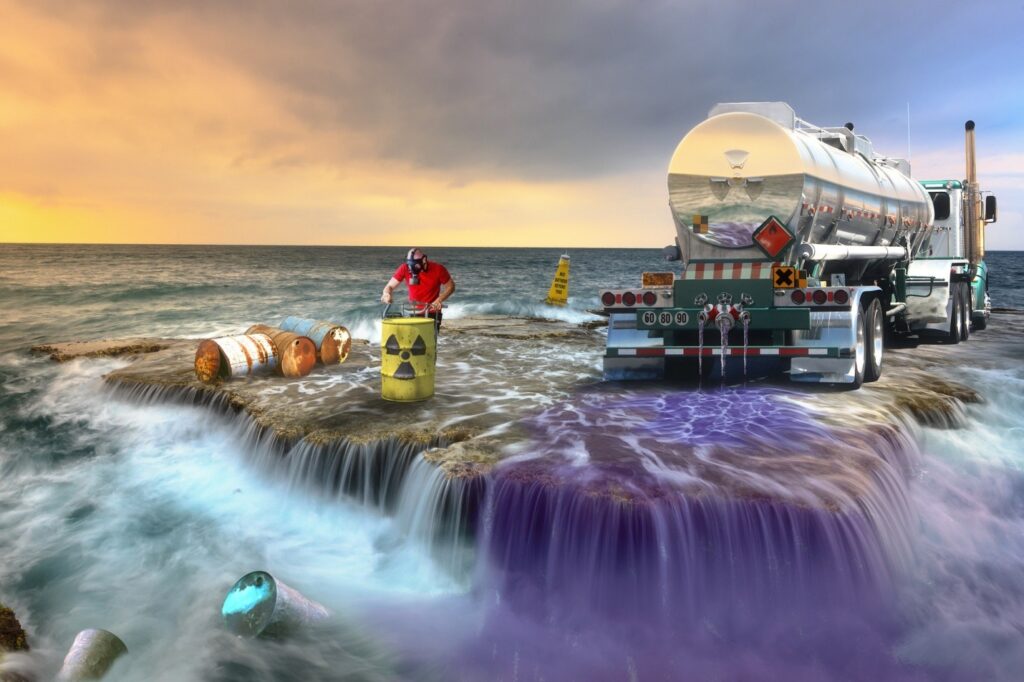Getting The Reclaim Waste To Work
Getting The Reclaim Waste To Work
Blog Article
Our Reclaim Waste PDFs
Table of ContentsA Biased View of Reclaim WasteReclaim Waste - The FactsExcitement About Reclaim Waste5 Easy Facts About Reclaim Waste DescribedThe 15-Second Trick For Reclaim Waste
Domestic sewage waste refers to the waste and products from a residential septic container. The proper management and disposal of residential sewer waste call for fluid waste to be moved to a sewer treatment plant where the correct approaches and tools are used to cleanse and dispose of waste.
Industrial waste often includes potential dangers, such as flammable products or a blend of fluid and strong waste items, and needs an advanced and thorough disposal procedure. The disposal of commercial waste usually involves the filtration of waste before transportation to ensure safe and correct disposal. Hazardous waste is created from results and drainage of industrial processes and production.
This sort of waste can not use the exact same sewer administration transportation or processes as septic or commercial liquids. The hazardous waste monitoring process requires the evaluation and screening of liquid waste prior to it goes through the disposal procedure (liquid waste disposal melbourne). Runoff waste is the liquid waste that originates from runoff and excess stormwater in highly inhabited locations or cities
Runoff waste can cause contamination and flooding if not managed properly. Ensuring correct waste administration can stop catastrophes and decrease environmental injury.
The smart Trick of Reclaim Waste That Nobody is Talking About
Call PROS Solutions today to learn about our waste management and disposal solutions and the correct methods to take care of the liquid waste you create.
(https://www.twitch.tv/reclaimwaste1/about)Do you know what occurs to your water when you end, purge the commode or drain pipes the washing device? No? Well, it deserves recognizing. This so-called 'wastewater' is not only an essential source but, after treatment, will be launched to our land, rivers or the ocean. Made use of water from toilets, showers, bathrooms, kitchen sinks, washings and industrial processes is referred to as wastewater.

water made use of to cool machinery or tidy plant and tools). Stormwater, a type of wastewater, is overflow that flows from farming and metropolitan areas such as roofs, parks, yards, roads, courses and gutters into stormwater drains, after rainfall. Stormwater moves neglected directly to regional creeks or rivers, ultimately getting to the ocean.
Reclaim Waste Things To Know Before You Buy
In Queensland, many wastewater is treated at sewer therapy plants. Wastewater is carried from residential or industrial sites through a system of sewage systems and pump stations, recognized as sewerage reticulation, to a sewer treatment plant.
The Division of Natural Resources recommends local governments concerning managing, operating and preserving sewerage systems and therapy plants. In unsewered areas, regional governments may need homeowners to set up private or house sewer therapy systems to treat residential wastewater from bathrooms, cooking areas, washrooms and laundries. The Department of Natural Resources authorizes making use of house systems when they are proven to be effective.
The majority of stormwater gets no therapy. In some new subdivisions, therapy of some stormwater to eliminate litter, sand and gravel has actually begun utilizing gross contaminant catches. Wastewater therapy takes place in 4 phases: Removes strong issue. Larger solids, such as plastics and various other objects mistakenly discharged to drains, are gotten rid of when wastewater is gone through screens.
Wastewater after that streams into big tanks where solids work out and are gotten rid of as sludge. Grease and scum are skimmed from the surface. Utilizes tiny living organisms recognizes as micro-organisms to click here for more info damage down and get rid of remaining liquified wastes and great particles. Micro-organisms and wastes are incorporated in the sludge. Removes nitrogen and phosphorus nutrients that can trigger algal blooms in our rivers and endanger aquatic life.
Reclaim Waste for Beginners
Nutrient elimination is not offered at all sewer therapy plants because it requires expensive specialised equipment. Clear liquid effluent generated after treatment might still contain disease-causing micro-organisms - liquid waste removal melbourne.

This usually implies wastewater has actually to be treated or impurities eliminated prior to it can be released to waterways. The majority of wastewater streams into the sewerage system. Under the Act, local governments carry out approvals and licences for ecologically relevant tasks (Periods) involving wastewater releases that may have a regional impact. The department carries out authorizations and licences to ERAs including wastewater launches that could have a regional or statewide impact.
Not known Details About Reclaim Waste
Monitoring provides factual information concerning water quality and can validate that permit problems are being satisfied. The info obtained through monitoring provides the basis for making water quality choices.
Report this page